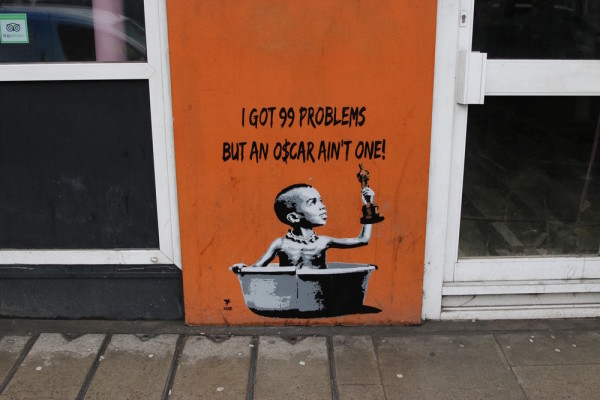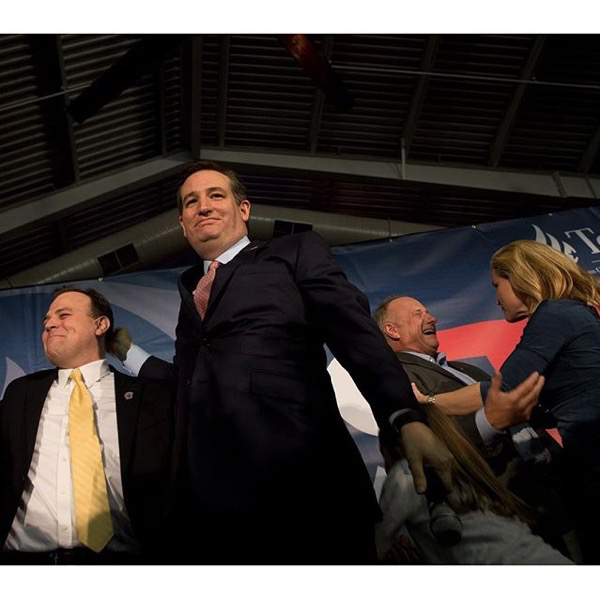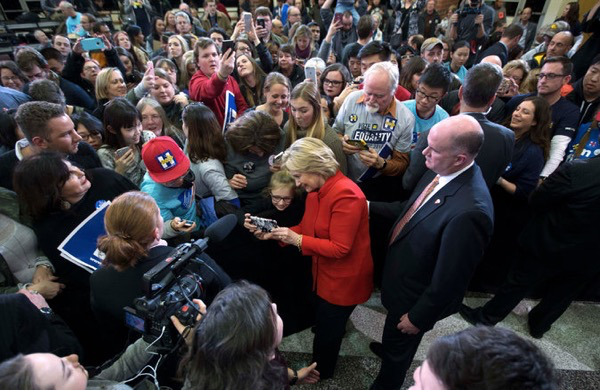Notes
Has Banksy Approach Run its Course? Future of Images as Tools for Public Argument
Yesterday morning, I looked out my office window to find that someone had stomped an enormous, erect penis into the freshly snow-covered lake below. The juvenile bit of snow-graffiti lasted all day, doing nothing in particular aside from annoying those of us trying to enjoy the view.h
That same afternoon, students in my graduate class wondered whether “image events” staged by social movements—Greenpeace, Earth First!, the Civil Rights Movemhent—had lost some of their oomph in the post-social media world. Now that anything can go viral and anyone can stage a spectacle, they asked, do dramatic, image-based interventions like tree-sits, lunch counter sit-ins, and confrontations with whalers even register?
This morning, I find myself reading—and nodding along with—Joel Golby’s snarky take-down of a piece of political graffiti (above) whose graffiti critique of racism in the Academy Awards falls absurdly far off the mark. Golby’s article takes that one, sad stencil to task but, in the process, ponders whether the whole idea of the Banksy-esque critique has run its course.
From the a-political snow-writing of some random college-student to the lazy activism of an east London graffiti artist (by way of the dedicated actions of some of the twentieth-century’s most profound social movements), I find myself wondering about the possibilities for visual politics today. Are we, ultimately, so fully saturated with images that they’ve lost the power to move us toward anything but cynicism?
I often play the cynic in my Reading the Pictures posts, but for once I’ll eschew pessimism and offer three quick takes on the enduring power of images as tools for making marginal arguments visible in public. I would also welcome a conversation on this question with other picture people.
Appropriating visuality: Political theorist Nicholas Mirzoeff suggests that the “right to look” has long belonged to the powerful. Visuality, he argues, originates with surveillance by an oppressive state and its representatives. But cell phone videos of police brutality, of teachers harassing students, and of politicians speaking frankly when they think no one is listening quickly remind us that there is a visual politics of surveillance emerging from the ground-up as well. Visuality is a powerful tool for those asserting their own right to look.
Valuing accumulation: Too often lately, justice has been denied even in the face of overwhelming visual evidence and our right to look seems impotent. So, it’s not enough to see that grassroots surveillance is happening or that more traditional forms of image-based politics continue. On their own, singly, pictures are as unlikely to change minds as are any other sort of communication. But the accumulation of images does have force over time. Who can deny, for example, that repeated images of police violence against people of color have begun to shift national conversations? And the whole idea behind #OscarsSoWhite is that the accumulation of images—absurdly white-washed or complexly diverse—matters and makes a difference for good or for bad.
Acknowledging Small Triumphs: It’s easy to look nostalgically at Charles Moore’s photographs of the 1963 Birmingham Campaign or Greenpeace’s encounter with whalers and imagine a by-gone era of powerful images that changed the world. The truth is, though, that even those famous photographic moments of resistance were, ultimately, small moves in a much longer arc. Sometimes, even those of us who know better attribute a quasi-magical power to pictures. We’re better off, I’d argue, letting pictures do their incremental work, celebrating the small victories that come from recalibrating how film is developed in order to better capture the diversity of skin-tone or—to contradict myself—re-making a pin-up calendar into a celebration of strong women. It’s not that pictures can’t ever spark massive change; it’s just that we shouldn’t assume that the absence of revolution indicates a failure of visual politics.
So, now I return to the Oscar-wielding starving child so aptly critiqued in Golby’s Vice.com post. Without discounting the critique or offering any defense of the artwork itself, it does seem fair to say that the graffiti in question, despite its hackneyed symbolism, its strange conflation of starving children and actors of color, and its terrible ‘caption’ is, in fact, evidence of an on-going visual politics: it suggests that the surveillance of the Academy extends even to a random street corner in London (whether or not the Academy notices that surveillance); it gives evidence of a horizontally accumulating argument (from #OscarsSoWhite to celebrity boycotts to Banksy imitators); and it gets the message out (even if in an entirely ham-fisted manner). Heck, it was enough to get Vice.com and now Reading the Pictures to take notice. That’s not nothing.
Don’t worry, though, I’m still not ready to go all Pollyanna on the visual politics of a snow penis currently melting away on Lake Mendota.
— Christa Olson
(stencil by Pegasus, via vice.com)



Reactions
Comments Powered by Disqus